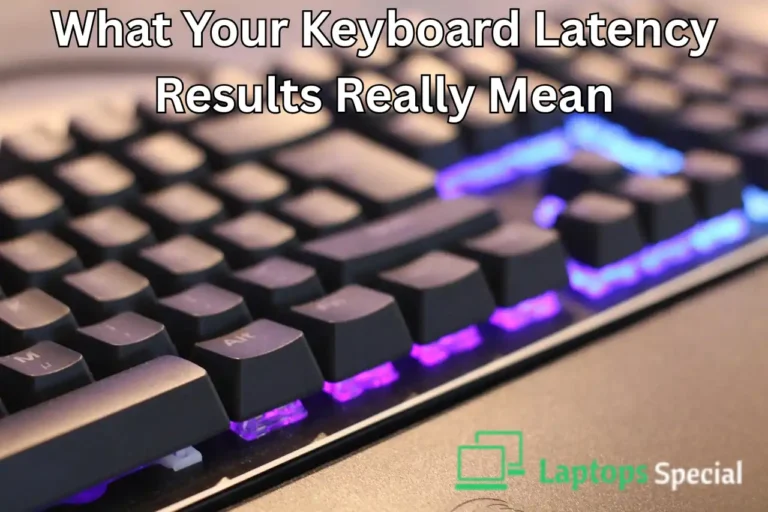Have you ever been really into a gaming session or writing an email and thought, “Why does it feel like my keyboard is just a bit behind me?” That odd lag? It may not be all in your head. It could be keyboard latency. And while “Keyboard Latency Results” may sound like something you pulled out of a technical manual, you really should learn about them to make your digital experience much better a gamer, a writer, or as someone who appreciates it when things just work.
So, What Is Keyboard Latency Anyway?
Let’s spare the technical jargon when explaining this. Keyboard latency is the time it takes from when you push the key to when you see the action on your screen. The keyboard latency is counted as milliseconds (ms). And here is the kicker; literally, a given number of milliseconds can make a really big difference – especially in fast-paced abundance in gaming or focused professional work.
Let’s imagine a situation, you are playing a game with your friend, and in between, you ask your friend to “stop,” but your friend reacts 3 seconds later. It is aggravating, based of time and context. Even in small amounts, keyboard latency can have the same aggravating feeling from the situation, especially like someone with really poor listening skills. This is not merely a complaint by gamers, it is a quality of life complaint for anyone that types frequently.
Understanding Your Keyboard Latency Results

After running the tests using all of the online tools or software, you likely get a straight number (e.g. 25 ms, 100 ms). What does that even mean?
- Under 10 ms: This is utopia. We’re talking about some of the fastest response times possible. Premium or gaming mechanical keyboards will hit under 10ms for sure.
- 10–30 ms: Good performance. This is good for most users, even competitive gamers and fast typists.
- 30–70 ms: Noticeable delay for the super-sensitive user. You’ll probably be able to use it just fine for casual tasks, but you’ll definitely notice the lag when gaming or writing a longer document.
- Above 70 ms: Yep. Lagging. You should see the latency, and you will hate it whenever it lag.
However, don’t freak out if yours doesn’t hit any of the above thresholds. A lot more can go into it.
Factors That Impact Latency (And How to Fix Them)
Latency isn’t just limited to the keyboard itself. A number of factors may also affect your results:
- Type of Connection
Wireless keyboards—especially older Bluetooth keyboards—will typically have more latency than a wired keyboard. You may want to reconsider that wireless keyboard if you’re using it to game with.
- Polling Rate
Fancy term, simple concept. The polling rate, meaning, is how often your keyboard reports to your computer. Higher = better. If you care about latency, look for keyboards that have a 1000Hz polling rate.
- Operating System and Background Applications
Even with your latency hardware, the software that operates a desktop or laptop computer has an impact as well. A slower operating system and programs that are running in the background (Looking at you, Chrome with 48 different open tabs) can add latency.
- Input Software and Drivers
Old or outdated drivers are a factor and whether you are using a third party key mapping app to change your keyboard input can add latency by creating more steps from your keystroke to what you view on screen.
- Display Latency
The delay you perceive may not even come from your keyboard, it could come from your monitor. Cheap, consumer displays usually can have their input lag become added to your perception of keyboard latency.

Why This Matters More Than You Think
In a competitive gaming context, latency can be the difference between winning and losing and feeling frustrated. In a writing context however, that small delay can break your flow. Have you ever tried to type a fast thought and then after a few moments realization, end up staring at a blinking cursor screen waiting for your words to catch up? Not desirable.
Even the average user benefits from low latency. It just feels better. It feels more natural. Like the device is communicating with you in real time. And isn’t that what we want from a technology?
Final Thoughts
Next time you are doing a latency test, don’t ignore the findings. Whether you’re a casual user still using your device for browsing or a full-out power user multitasking like a juggling octopus – your Keyboard Latency Results can unlock smoother, faster, and more intuitive digital experiences.
